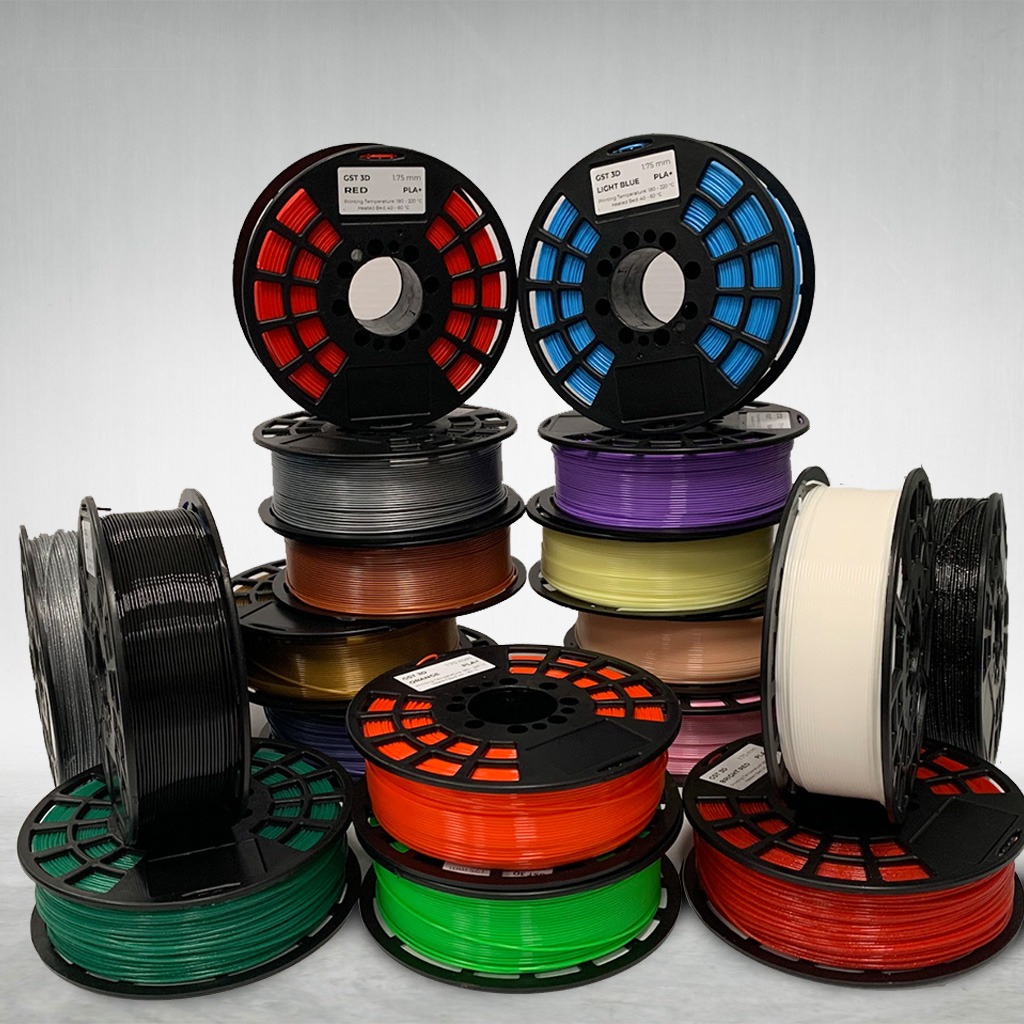3D Printing Has Revolutionized the Way We Create and Prototype Objects
One of the most important aspects of achieving good results is choosing the right filament. With so many options on the market, it can be challenging to determine which is best for your project. In this article, we will compare the most popular filaments and explore their characteristics, advantages, and disadvantages.
1. PLA (Polylactic Acid)
Characteristics:
- Easy to use: PLA filament is the most common and beginner-friendly filament. It prints at low temperatures and does not require a heated bed.
- Biodegradable: It is made from renewable resources like corn, making it more environmentally friendly.
- Low shrinkage: It is less prone to warping, ideal for detailed parts.
Advantages:
- Does not emit toxic odors.
- Available in a wide range of colors and finishes.
- Compatible with almost all 3D printers.
Disadvantages:
- Lower heat resistance.
- Relative brittleness compared to other materials.
2. ABS (Acrylonitrile Butadiene Styrene)
Characteristics:
- Durability: ABS filament is known for its strength and toughness, suitable for functional parts.
- Flexibility: Allows the creation of parts with some flex without breaking.
Advantages:
- Heat and impact resistance.
- Ideal for mechanical or industrial use parts.
Disadvantages:
- Emits toxic fumes; good ventilation is recommended.
- More prone to warping during printing.
3. PETG (Polyethylene Terephthalate Glycol)
Characteristics:
- Easy to print: PETG combines the best of PLA and ABS, with good bed adhesion and less warping.
- Resistant: Has good mechanical and chemical resistance.
Advantages:
- Transparency and glossy finish.
- Water and chemical resistance.
- More flexibility than PLA and ABS.
Disadvantages:
- Can be sticky during printing, complicating handling.
- Less color variety compared to PLA.
4. Nylon
Characteristics:
- High strength and durability: Ideal for functional parts that need to withstand significant stress.
- Flexibility: It is a relatively flexible material, useful for moving parts.
Advantages:
- Good abrasion and wear resistance.
- Can be dyed to obtain different colors.
Disadvantages:
- Difficulty in printing due to the high temperature required.
- Absorbs moisture from the air, which can affect print quality.
5. TPU (Thermoplastic Polyurethane)
Characteristics:
- Flexibility: TPU Filament is a flexible filament, similar to rubber, ideal for elastic parts.
- Chemical resistance: Resistant to oils and greases.
Advantages:
- Can be used to create parts that require elasticity, such as seals or protectors.
- Good wear resistance.
Disadvantages:
- Difficulty in printing due to its flexible nature.
- Requires an extruder with support for flexible filaments.
Tips for Choosing the Best Filament
- Purpose of the Object: Consider whether you need a decorative, functional, heat-resistant, or flexible part.
- Ease of Use: If you are a beginner, choose easier-to-handle filaments like PLA.
- Printer Specifications: Ensure that your printer can handle the temperatures and conditions required for the selected filament.
- Cost: Prices vary significantly between different types of filaments. Make sure the chosen filament fits your budget.
There is no universal “best” 3D filament; the choice depends on the specific needs of each project. PLA is excellent for beginners and aesthetic projects, while ABS and PETG are more suitable for functional parts. Nylon and TPU are used for specialized applications that require high strength or flexibility.
By understanding the properties and limitations of each type of filament, you can choose the material that best suits your needs, optimizing both the quality of your prints and the functionality of your projects.
